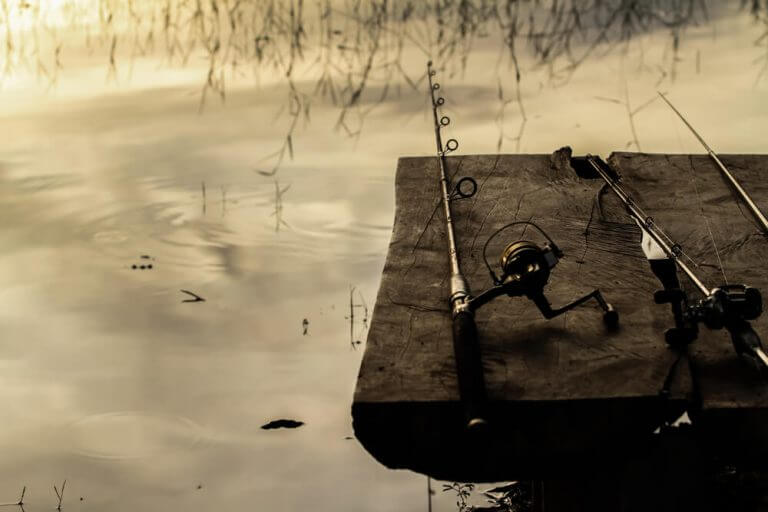How To Put Line On A Baitcaster Reel
Baitcasting fishing reels are considered more challenging to get to grips with than other fishing reels, mainly due to some of the problems some newcomers face due to the technical putting line method. Knowing how to go about putting a fishing line onto a baitcaster reel, though, might be an altogether new challenge for you. It is an essential aspect as you may need to do this when you first get your reel, and of course, you are more than likely to run into an occasion where you need to do this on a fishing trip. However, the process is easy if you follow the below-mentioned steps.
Steps To Put Line On A Baitcaster Reel
Step: 1- Choose a Good Line
First, you will need to make sure you have or buy a suitable line. What you use is up to you and the level of fishing. Although the 10lb test line should be strong enough in many cases, but, of course, if you are fishing for large fish, be sure to use a stronger one or you will end up with no fish, and no line left either!
Step: 2 – Soak For A While to Prevent Tangling
You can soak your fishing line for around 30 minutes in warm water, and it will help stop the line tangling so much as the curl will be a lot looser. If you usually face this problem, you must give it a try. Also, don’t forget to dry it thoroughly before using it.
Step: 3 – Continue Threading
Feed the fishing line’s free end through the rod guides that you can locate on the rod – these look like small circles. Start at the tip where the ring should be smaller than the others. Continue threading through the guides until you reach the reel.
Step: 4 – Rewind the Line
Wrap the line around the spool once and tie a knot in it. This will be used to start rewinding the line onto the spool. Put the new line on the floor as you don’t need to hold it for the next part. In the standing position, look at the rod’s tip, so it is close to the new line, which is on the floor, and the rod should face the ground. Then try to close the gap between the new line and rod tip as much as possible.
Step: 5 – Turn the Handle And You’re Done
Turn the fishing reel handle, so it loads the new line onto the spool and keeps going until the reel is full. When you are done, cut the line after the rod tip, and you’ve now put a line on the baitcasting reel.
See Video
Some Tips For Putting a Line On A Baitcaster Reel and Better Casting
Correctly spool the reel and prepare it for casting. It takes quite a lot of practice to get your method right and improve your casting technique on a baitcasting reel. Baitcasting reels frustrate many people when they come to use them, but you can avoid the usual pitfalls with a little time and effort. Be warned, though, that you will, sooner or later, have to unravel a backlash (or “birds nest”), which isn’t fun at all. Before practicing your casting, there are a few things you might want to focus on in any case.
Consider Using Heavier Lines
When spooling up your reel, consider using more massive lines even if you plan on fishing with a lighter line. It is easier to cast with an enormous line so practice with this instead. Also, don’t overfill the spool as the spool will spin faster for longer, which causes backlashes.
Practice For Thumb Control
Thumb control is an integral part of the casting. Your thumb should be on the spool of the line and should control the flow of the line. You can practice your thumb control anytime while watching television or reading a book. Put a 1-ounce sinker on the end of the line and let the weight drop freely. You may need to loosen the spool control to do this. After the weight levels, use your thumb to prevent hitting the ground. Keep repeating this until you get a feel for it.
Adjust Weight Properly
When you are ready to try casting, attach a lure or weight onto the line. Adjust the line brake tension so that the bait will fall by itself to the floor again, but ensure that the line stops feeding once it has hit the ground. (Note: If you switch weights, you will need to readjust this setting accordingly).
Check the Position of Hands
Hold the rod in your hand with the handles pointing downwards towards the floor. When you are ready to cast, put your now highly trained thumb onto the spool and click the line release button.
Cast Your Lure Now
The tricky part now is to cast your lure, making sure you keep your thumb on the spool while backcasting (i.e. rod behind you) but releasing it as you begin your forward cast. The power for the cast should come from your wrist and not your shoulder. When you release, your thumb should sit lightly on the spool so that line can be feathered off the spool. As your lure or weight reaches its target, clamp down on the spool as you practiced, which will stop your line’s forward motion.
You can practice this in a field or large open area before going fishing until you perfect it.
Frequently Asked Questions
Is the baitcasting reel better than traditional spinning reel in fishing?
The most challenging type of reel to master is, by all means, the baitcasting reel. These reels have gained much popularity over the years despite being considered more difficult to fish with due to the line release speed compared to other types of reel, such as spin casting reels.
But the control and the casting process are just incredible. Also, it is more accurate. It is excellent for using because of features, but a bit difficult to handle for beginners.
What is the method of cleaning a baitcaster reel?
Keeping your baitcasting reel clean is essential to prolonging the life of it. It is vital to wash and wipe down any reel that has been used for saltwater fishing. This will undoubtedly age the reel quicker if you don’t.
Beware of using water with pressure as it will push the dirt or salt inside the baitcaster reel. Keep a small spray of fresh water with you so that you clean it immediately after fishing. It would be best if you develop it as a habit of cleaning instantly.
How much line should you put on a baitcaster?
This has always been a controversial topic, but research states that it shouldn’t be put completely. There should be a 1/8 inch gap between the spool and line. Put it correctly to enjoy your fishing experience.
How to maintain the baitcasting reel?
You can easily maintain your real and use it for a longer time. For essential maintenance, you do not need to take the reel apart altogether. You can maintain it easily by following these simple steps.
- After you have removed the side plate, you should take apart the rest of the reel, such as the spool and bearings. It will vary with each baitcasting reel, so be sure to check the manual.
- Keep a note of which parts you took out in which order. It helps to lay them on a clean white towel so nothing can roll away and get lost. Wash all components using warm water but do not submerge into the water since debris may become lodged deep in the reel. Use cotton swabs if needed. Once it is cleaned properly, and you’re satisfied, dry it with a clean cloth.
- Next, add lightweight oil to any moving parts such as bearings, spool shaft, etc. It would help if you used something like Quantums Hot Sauce and never use multipurpose oil since this may hold dirt in place. Be careful not to apply lubricant to the drag washers and rub them clean if any gets on them.
- Reassemble the reel following the instructions you have and make sure any gear teeth are aligned correctly. If you are storing the reel over winter or extended periods, it is a good idea to loosen the drag before it does not become weakened.
Summing Up
While putting a line on a baitcaster reel, always consider your level of skill. Also, take into account the level of fishing you want to pursue. Whether you’re a beginner or expert, it is essential to string your reel correctly. You might be frustrated initially, but once done correctly, you are on the way to enhancing your fishing experience.







